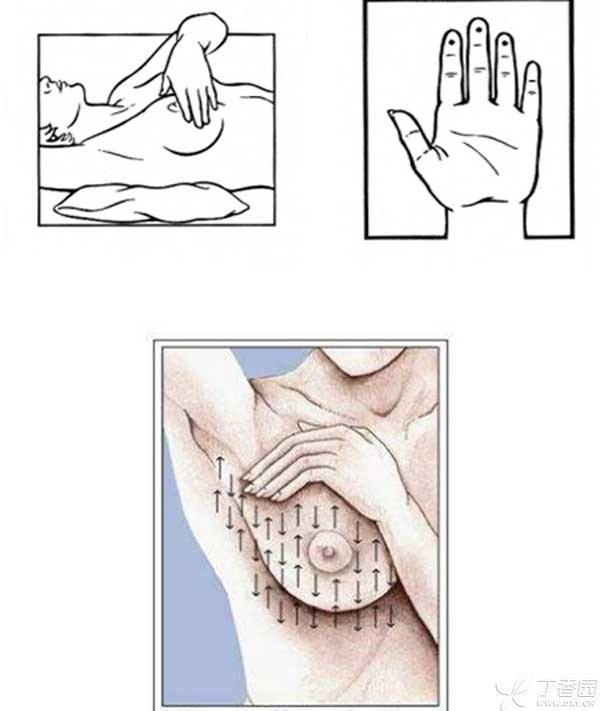
Is what [Cancer Screening]?
Cancer has become the second leading cause of death in China, with more than 1.6 million people diagnosed with cancer and 1.2 million people dying of cancer every year. Everyone has a one-fifth chance of suffering from cancer in his life. Therefore, many health examinations set up cancer screening in order to detect some early cancers or precancerous lesions.
According to the definition of the National Cancer Institute, the so-called cancer screening is the examination method for detecting cancer or precancerous lesions before symptoms appear. This definition tells us two things:
1. Cancer screening is aimed at those who have no symptoms;
2. Cancer screening is specially carried out for the detection of cancer or precancerous lesions and has no other purpose.
Because the public [turns pale at the mention of cancer] and the early diagnosis of cancer is of great significance, cancer screening is naturally regarded as the [selling point] of health examination services by many medical service institutions. There are often advertisements that many cancers can be found by taking [a tube of blood].
Is this really the case?
In fact, there are different screening methods for different cancers. It is not realistic to find all cancers through [one tube of blood]. What is even more disappointing is that very few cancers can be found through early screening, and not everyone is suitable for screening.
Cancer screening falls into two categories.
One is the screening of the general population, which can be described as [machine gun shooting] and is suitable for all people of a certain age group. The other is the screening of high-risk people, which can be described as [sniper rifle shooting], first looking for those who are prone to cancer (high risk), and then focusing on screening them.
Cancer Screening Suitable for General Population
According to the American Cancer Society, there are currently only three types of cancers that need this [machine gun-fired] screening: breast cancer, cervical cancer and colon cancer.
I. Breast Cancer
The number of new cases and deaths of breast cancer in China account for 12.2% and 9.6% of the world’s total respectively every year. Breast cancer is also the cancer with the highest incidence rate among Chinese women, but the mortality rate of breast cancer is decreasing year by year, which is a cancer with relatively good therapeutic effect.
How to screen breast cancer? The American Cancer Society recommends:
1. Women over 40 years old have mammography checked once a year.
2. High-risk women, regardless of age, need to have breast magnetic resonance examination once a year.
[High risks] include:
After professional risk calculation, the possibility of breast cancer for life is more than 20%.
Gene testing found BRCA1 or BRCA2 gene mutation (such as Angelina Jolie);
There are BRCA1 or BRCA2 gene mutations in parents, children, brothers and sisters.
When I was 10-30 years old, I had chest radiotherapy and so on.
Whether there is a high risk or not, you need to consult a breast specialist.
3. Women aged 20 to 39 are examined by breast specialists every 3 years, including observation and touch of the outside of the breast. Women over 40 years old are examined by breast specialists once a year.
4. Women over the age of 20 can examine the breast through their own observation and touch. Observe the appearance of the breast, such as whether there are abnormal secretions on the nipple, whether there are abnormal changes in the size and characteristics of the breast, and whether there are abnormal changes in the skin of the breast (such as orange peel-like changes). Touch is mainly to feel the texture of the breast and whether there are hard lumps. See below for the steps:

The picture is from the American Cancer Society.
However, it is worth noting that breast self-examination is not a good way to detect breast cancer at an early stage. In many cases, the abnormalities found have nothing to do with breast cancer and cannot replace other screening methods. What you have to do is to go to the hospital as soon as possible for further examination if you find abnormalities.
II. Cervical Cancer
China accounts for 1/3 of the world’s new cervical cancer cases every year and is a “large country with cervical cancer”. Most cervical cancer can be diagnosed early, but many women have to wait until symptoms appear before coming to see a doctor, thus missing the best treatment opportunity. Moreover, most cervical cancer is caused by a sexually transmitted virus, human papillomavirus (HPV).
Cervical cancer screening is to detect HPV infection, precancerous lesions or early cervical cancer. So what should be done?
1. For women aged 21-30, the cervical smear is checked once every 3 years, and HPV test is not required. If the cervical smear is found to be abnormal, HPV test is required. Then change the screening plan according to the results and consult a gynecologist specifically.
2. For women aged 31 to 65, check the cervical smear once every 3 years, or check the cervical smear + HPV test once every 5 years. If the cervical smear finds abnormalities, HPV needs to be detected, and then a new screening scheme is determined according to the results of the two tests. Generally, the screening frequency is changed to once a year, and a gynecologist is required to be consulted specifically.
3. Women over 65 years old can stop screening, but only if regular screening is not interrupted in the first 10 years and no abnormalities are found in cervical smears in the first 20 years.
4. Even if you have been vaccinated against cervical cancer, you should be screened according to the above screening plan. Because the vaccine cannot cover all subtypes of HPV.
With the popularization of cervical cancer vaccine and cervical cancer screening, the incidence rate of cervical cancer in developed countries has greatly decreased. Popularization of cervical cancer screening is currently the most effective means to prevent cervical cancer. However, due to the limitation of women’s economic situation and educational level, China’s development is not standardized enough and requires the joint efforts of the state, society, families and individuals.
Third, colon cancer
Colon cancer is the fifth most common cancer in China, In recent years, the incidence rate has been rising. Studies show that everyone has a one-in-a-20 chance of developing colon cancer in their lifetime. Early detection of colon cancer can increase the 5-year survival rate of cancer patients to 90%. Cancer screening is one of the powerful weapons against colon cancer, but only 4 out of 10 colon cancer patients are detected early.
How to screen colon cancer?
Ordinary people over 50 years old, both men and women, need one of the following screening methods:
1. Check colonoscopy every 10 years
2. Check sigmoidoscopy every 5 years
3. Check colon barium meal every 5 years
4. CT colonography (virtual colonoscopy) shall be checked every 5 years.
5. Check the fecal occult blood test based on guaiac resin every year.
6. Immunochemical examination of stool is conducted every year.
7. Check stool DNA every 3 years
It should be noted that, except for the colonoscopy screening in item 1, if abnormalities are found in all other screening tests, colonoscopy shall be performed again, and the treatment plan shall be determined according to the examination results.
People with high risk of colon cancer, regardless of what’s age, need screening, mainly relying on colonoscopy, because colonoscopy not only can examine, but also has therapeutic function.
So who is at high risk of colon cancer?
1. Patients who have previously suffered from colon cancer or adenomatous polyps
2. Patients with inflammatory bowel disease (Crohn’s disease or ulcerative colitis)
3. Patients with a family history of colon cancer or colon polyps
4. Patients with familial adenomatous polyposis (FAP) or hereditary nonpolyposis colorectal cancer (HNPCC)
Having said the [machine gun shooting] cancer screening, what other [sniper rifle shooting] cancer screening? What is the difference between the two in what? Please pay attention to < < which cancers can be detected through early screening? (bottom) > > (click here)
Author: Ding Chao
This article is exclusively authorized by the author to be used by Clove Garden and refuses any other form of reprinting.
